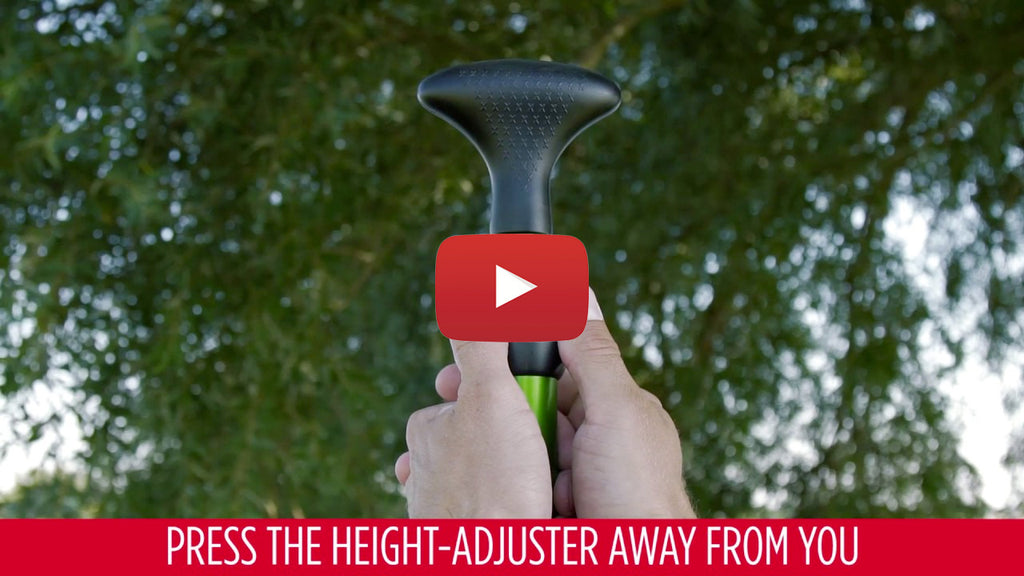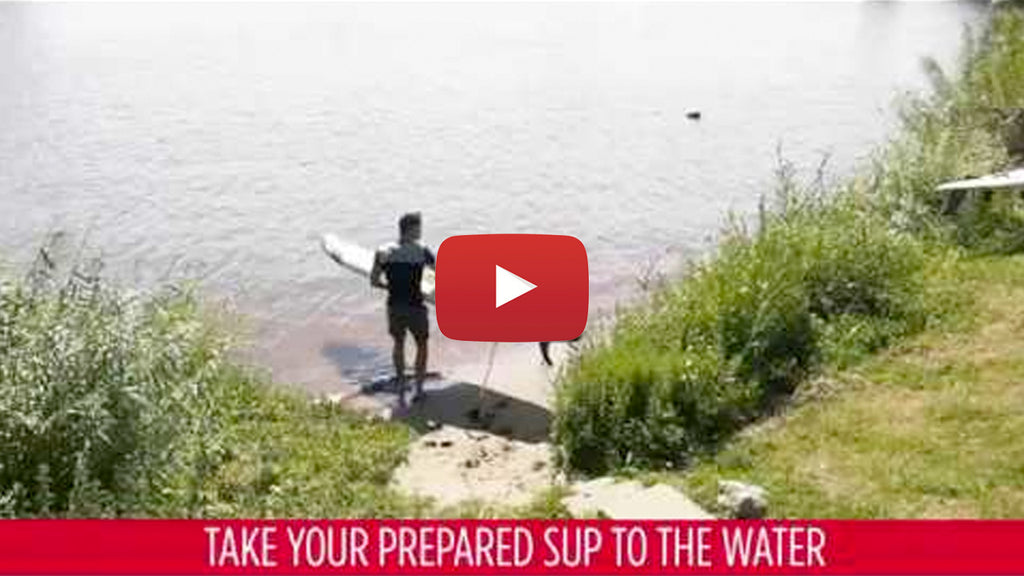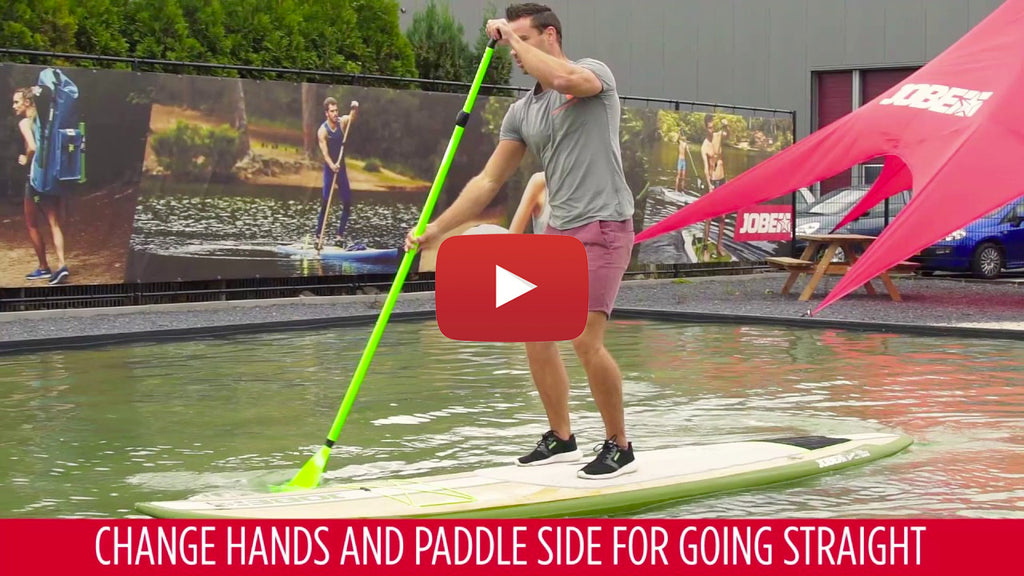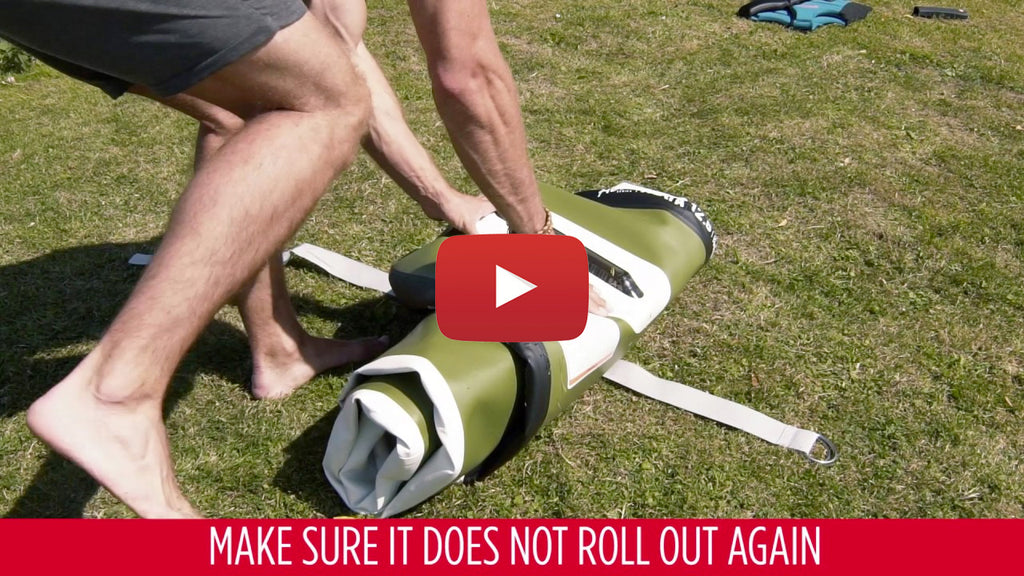Which SUP board is right for me?
Almost any SUP board will get a beginner on the water, but choosing the right one from the start will help you enjoy paddling more and get better value for your money. The right board lets you progress faster, ensures your equipment keeps up with your skills, and saves you from having to buy a new one after just one season — when you realize you’re pushing a banana-shaped wave of water in front of you at 2 km/h!
Frequently asked questions about SUP boarding
When buying a SUP board, it's not necessarily a good idea to buy the first or cheapest board that comes along. The choice of a SUP board depends on the weight of the user, the intended use and the wishes of the user. Choosing the right board for the job at hand will ensure that your equipment will last for years and you won't have to upgrade to a new board anytime soon.
When buying a SUP board, it’s usually not wise to go for the first or cheapest option you find. The right choice depends on your weight, intended use, and personal preferences. By choosing a board suited to your needs, you’ll ensure that your equipment performs well, lasts for years, and that you won’t need to upgrade anytime soon.
SUP stands for Stand Up Paddling, a sport that originally developed from surfing. Surfers looking to reach bigger waves farther from the shore found that paddling by hand while lying on their boards was slow and exhausting. To solve this, they began paddling while standing up, using a long paddle for propulsion.
The technique worked so well that it quickly became popular — not only among surfers but also among those who enjoyed calm-water paddling on lakes, rivers, and coastal areas. From this evolution, stand up paddling became a sport of its own, with both hardshell and inflatable SUP boards now used around the world for recreation, fitness, and adventure.
There are many online stores and even some traditional sports shops that sell SUP boards today. However, when buying one, it’s important to check the professionalism and expertise of the retailer. A knowledgeable seller will provide accurate technical information and help you choose the right board for your needs — without overstating features such as load capacity or performance. Choosing a trusted, specialized SUP retailer ensures you get a high-quality board and the right guidance from the start.
The width of your SUP board plays a key role in its stability, handling, and speed. For beginners or paddlers who enjoy a relaxed, stable ride, a wider board with rounded ends is ideal — typically around 79–85 cm in width. This size range provides excellent balance and confidence on the water.
If you’re aiming for higher speed or longer-distance performance, choose a narrower board under 80 cm with a sharper, more streamlined nose. These boards glide faster, cut through waves more efficiently, and are favored by experienced paddlers and fitness enthusiasts looking for performance.
The length of a SUP board also correlates closely with its cruising speed and performance. Boards designed for touring or racing are typically longer, measuring around 12.6–15 feet (380–450 cm). Their extended waterline allows them to glide faster and maintain speed over long distances.
For recreational paddling, shorter boards — around 10–12 feet (300–360 cm) — are ideal. They’re easier to handle, turn, and transport, making them perfect for casual use, family paddling, or relaxed outings on calm waters.
Depending on the model, an inflatable SUP board is typically inflated to a pressure of 12–25 PSI (0.8–1.7 bar) using either a manual hand pump, an electric SUP pump, or an air compressor. It’s not possible to inflate the board by mouth, as the required pressure is far too high and the valve system prevents air from entering that way.
Most SUP boards use the Halkey-Roberts valve type, a durable and reliable standard designed to handle high pressures and ensure a secure, airtight seal during use.
A SUP board can be stored over the winter either inflated or deflated. If you choose to store it inflated, avoid keeping it at maximum pressure — around half of the recommended PSI is ideal to reduce material stress.
The most important step in winter storage is to thoroughly clean and dry the board before putting it away. This prevents mold, odors, and material degradation, ensuring your board stays in great condition and is ready for next season.
The materials used in high-quality SUP boards are strong and durable, so you can safely take your dog along without worry. Your dog’s nails won’t damage the board’s surface, although they may leave minor marks on the deck pad over time.
It’s a good idea to train your dog gradually — letting them get comfortable with the water and the board before heading out. And just like for humans, a buoyancy aid is recommended for dogs, ensuring both of you stay safe and confident while paddling together.
Expert help with SUP board selection
Our team has been paddleboarding for over ten years, and we price our products based on their real features and performance. You won’t find endless “-50%” offers or inflated load capacity claims — instead, you’ll find accurate product descriptions, expert advice, and quality boards in every price range. The boards we sell perform as promised, offering excellent glide and a smooth, enjoyable paddling experience.
We’ve been serving customers from Mikkeli for a decade, delivering across Finland and helping paddlers of all levels find the right gear.
If you’re not interested in technical details and just want to get on the water with the right equipment — or are buying a SUP board as a gift — our customer service team will gladly help you choose the perfect board.
Our team is passionate about water sports in all their forms and has tested every SUP board we sell, so don’t hesitate to reach out for advice or recommendations.
045 841 7744


Stand Up Paddle - SUP or SUB board
SUP is short for Stand Up Paddle, referring to a board similar to a surfboard but larger, designed to be paddled while standing upright. The sport originated in Hawaii, where surfers used paddles to move along the shoreline and catch waves more easily. They soon discovered that it was also an enjoyable and efficient way to travel on calm water, and from there, SUP boarding spread to lakes and rivers across Europe.
Every now and then, you might hear people amusingly mispronounce it as a “sub-board” — but rest assured, it’s all about standing up, not going under!
When comparing SUP boards, they can generally be divided into two main types: inflatable SUP boards and hardshell SUP boards.
The choice between them usually depends on price, storage space, and transport needs. Inflatable boards are lightweight and easy to pack into a backpack, making them ideal for travel or limited storage. Hard SUP boards, on the other hand, are ready to use immediately — no pumping required — and typically offer slightly better performance in wind and waves.
If you plan to paddle mostly in one location, often in choppy or challenging conditions, and want maximum performance and responsiveness, a hard SUP board is an excellent choice.
Most popular SUP boards
Most of the SUP boards we offer are inflatable, as they are more affordable, easier to transport and store, and can withstand the same use and conditions as hardshell boards. The highest-quality inflatable SUPs now offer performance and rigidity comparable to hard boards.
Excellent examples of premium inflatables that rival hardboards include the Saimaa SUP Sun, Saimaa SUP Moon, and the Jobe Duna and Jobe Neva models. Every inflatable SUP we sell fits neatly into its carry bag, which also has room for other essential gear.
Once at the beach, simply unpack the bag, unroll your board, and inflate it in just 5–15 minutes — and you’re ready to paddle.
When choosing a SUP board, pay close attention to its dimensions and shape, whether you’re selecting an inflatable or a hardboard model.
When choosing a SUP board, pay attention to the dimensions and shape of the board, whether it's a hard or inflatable board.


SUP Board Length
A short SUP board is easy to handle and highly maneuverable, even for smaller paddlers. It turns quickly and feels responsive, making it ideal for playful or tight spaces. The trade-off is that you’ll need to switch paddle sides more often, as shorter boards have less directional stability.
A longer SUP board, on the other hand, is harder to maneuver but offers better tracking and glide, so you can paddle straighter and farther with fewer corrections — perfect for touring or fitness paddling.
The Saimaa SUP Lily is a light, agile board designed for smaller paddlers, while the Saimaa SUP Star is the most directionally stable model in our range.
SUP Board Width
Width determines stability. A wider board offers more balance and confidence, especially for beginners or paddlers with limited balance. The Saimaa SUP Bass is a great example — a wide and family-friendly SUP that remains stable even when carrying a larger adult with a child.
Narrower and longer boards are more challenging but faster and more efficient, preferred by paddlers seeking performance and speed.
SUP Board Thickness and Volume
Thickness affects volume, buoyancy, and stiffness. A thicker board offers greater load capacity and rigidity. Inflatable boards under 15 cm thick tend to bend under adult weight, especially if not inflated to full pressure, which can slow you down.
A 15 cm thick, high-quality board can easily carry over 120 kg and remains stable even with a heavier paddler, child, or dog on board.
SUP Board Shape
The shape of a SUP board strongly influences how it performs on the water. Boards with rounded bows and sterns are fun, easy to turn, and forgiving, though less directionally stable. This all-round shape is the most popular globally because it suits families, beginners, and leisure paddlers. The Saimaa SUP Sun and Jobe Yarra are perfect examples — versatile boards suitable for everything from family use to yoga sessions on calm water.
Boards with a sharper, kayak-like bow and a square stern are built for speed and efficiency. The pointed nose cuts through waves smoothly, while the square tail reduces drag for faster, straighter paddling. These are ideal for fitness or touring. Excellent examples include the Saimaa SUP Moon and the Jobe Neva.
Inflatable SUP board
When choosing an inflatable SUP board, it’s important to consider both the air pressure rating and the quality of materials and accessories.
Pressure and Structure
Pressure often correlates with board quality. Even entry-level boards typically support around 15 PSI, providing enough stiffness to prevent the board from bending or forming a “banana shape” under load. At the right pressure, a SUP board retains its shape, glides efficiently, and performs well in the water.
However, pressure alone doesn’t determine quality — the materials and construction play an even bigger role. Most inflatable boards are made from PVC plastic, and both its thickness and grade are key factors in durability. Another essential component is the dropstitch core — a dense layer of vertical threads connecting the top and bottom of the board, preventing it from bulging when inflated.
Dropstitch material varies by quality: from standard or thin weaves to reinforced dense weaves and advanced X-stitched constructions. The denser and stronger the dropstitch, the stiffer and more durable the board will be, allowing for higher operating pressure and a more rigid feel.
All Saimaa SUP boards sold by Vesiurheilu.fi use top-quality dropstitch and PVC materials within their price class. Thanks to this, they maintain their shape even at moderate pressures — so you don’t need to exceed 15 PSI, even though premium models like the Saimaa SUP Sun and Saimaa SUP Moon can handle up to 25 PSI.
Accessories and Equipment
Inflatable SUP boards are often sold as complete packages, but the included accessories can vary greatly in quality. Here’s what to look for:
Choose a fully adjustable paddle with a properly angled blade for efficient strokes. Paddle quality significantly affects performance — from basic aluminum paddles for beginners to ultralight carbon-fiber paddles for advanced users.
Every SUP package we sell includes a durable transport bag, designed for long-term use. Bags are available in canvas, waterproof, or wheeled models, and additional carry bags can be purchased separately if needed.
A SUP leash is an essential safety accessory. In windy conditions, your board can drift away quickly if you fall off. Always use a flexible leash so that the cord stays comfortably on the board when paddling and doesn’t drag behind you, causing unnecessary resistance.
By paying attention to the materials, pressure capacity, and included accessories, you’ll ensure your inflatable SUP board performs reliably, lasts for many seasons, and delivers the best possible paddling experience.


Hardshell SUP
If you’re choosing a hard SUP board for general recreational use — for example, at a summer cottage, campsite, or rental center where the boards may be handled less carefully — the Titan series or Tahe Beach Performer is an excellent choice. These virtually indestructible SUP boards are built from fiberglass and polycarbonate, making them extremely resistant to impacts from rocks, docks, and other hard surfaces. Thanks to Jobe’s advanced monocoque construction, Titan boards offer outstanding glide performance while being the lightest and most durable hard SUP boards in their class.
Choose the right SUP board with our comprehensive guide
SUP boards for rental use
For over eight years, we’ve been supplying SUP boards to rental businesses all across Finland. The most popular models have been Saimaa SUP's Sun, Moon and Bass board packages — made from the market’s strongest, UV-protected, and durable PVC material. Both rigid and high-quality inflatable boards are designed to withstand the wear and tear of rental operations.
Interested in boards for rental use? Contact us for a tailored offer!
Saimaa SUP boards
The Saimaa SUP board collection is designed in Finland, based on a decade of paddleboarding experience and extensive testing of international models. With this accumulated expertise and continuous customer feedback, the Saimaa SUP lineup consists of inflatable boards best suited for Finnish conditions — all built with premium materials for their price range.
Jobe SUP boards
Jobe is a Dutch brand with over 30 years of experience in developing water sports equipment. We import Jobe SUP products directly, ensuring competitive pricing and consistently high quality. If you’re looking for the latest technical innovations and performance-driven designs, you’ll find them in Jobe boards.
Our expert customer service is happy to help you choose the right board based on your needs and experience — contact us at info@vesiurheilu.fi or (+358)45 841 7744
Browse SUP boardsInstructions and technique tips for paddling
SUP board storage, maintenance and repair
SUP board instructions
Safety instructions for paddling








































